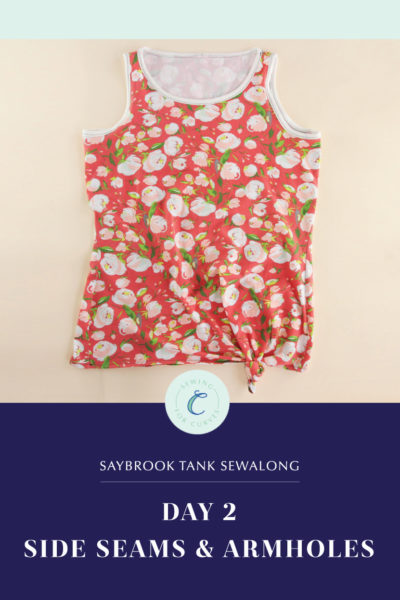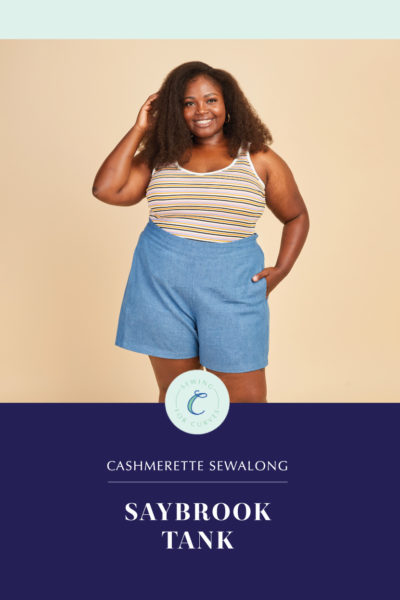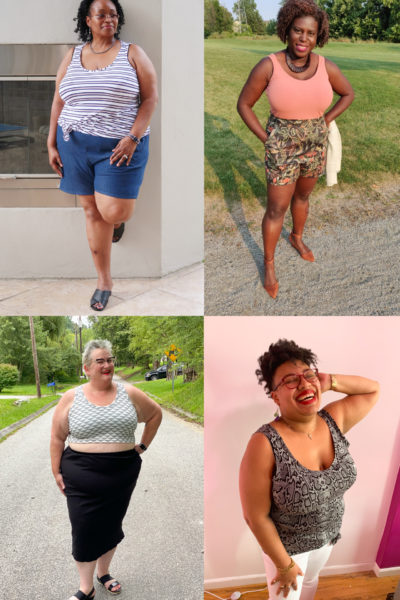Are you ready to sew your first Saybrook Tank? Today, we’re kicking off our sewalong by going through our prep checklist to make sure our pattern and fabric are ready for us to start. Thanks for joining us!
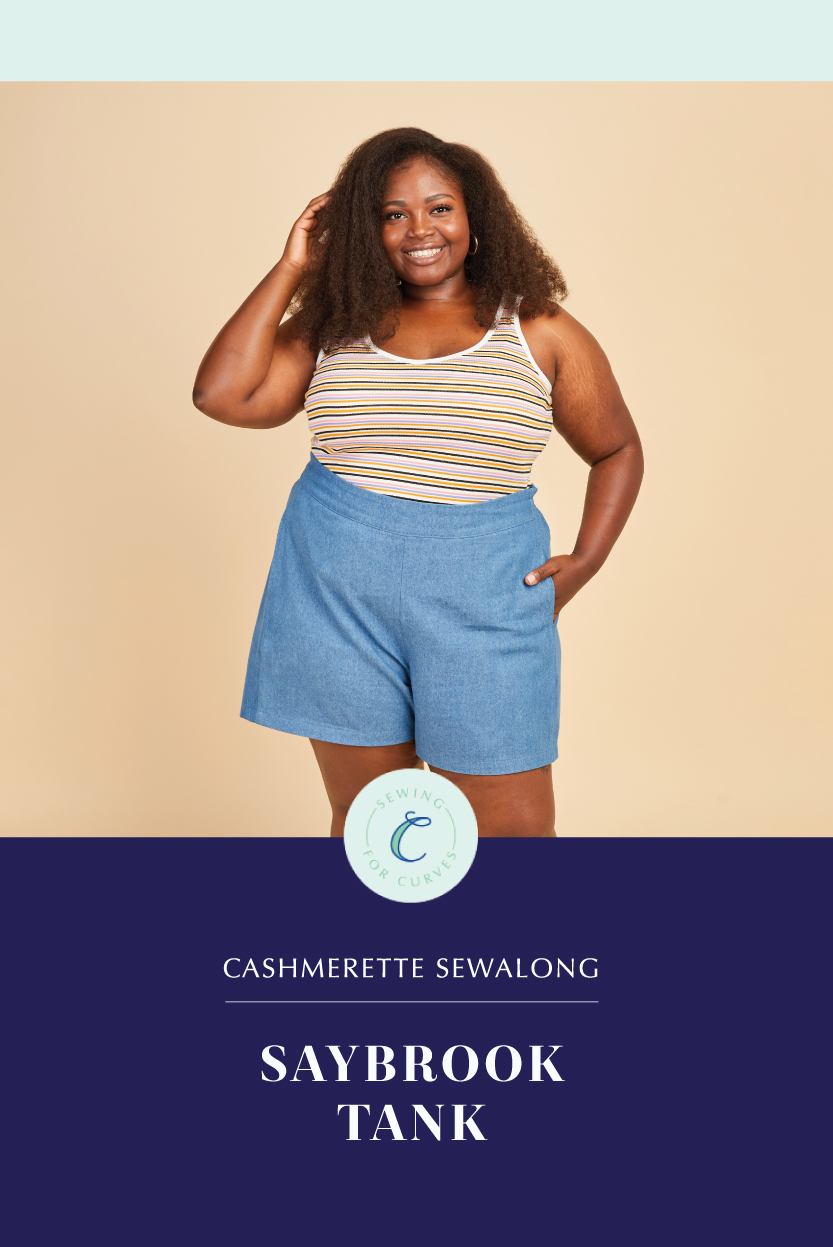
If you’re curvy, the Saybrook Tank is the knit tank of dreams This knit tank is easy to sew and is designed for curves in sizes 12-32 and cup sizes C-H. And the best part is, no bra peeking out!
Okay, so after checking out our Saybrook soiree and loading up on fabric inspiration and ideas from ready-to-wear fashion, you’re ready to sew your first Saybrook. Let’s get started.
First up, we need to pick our size. Thanks to the three cup sizes it’s more likely that you’ll fit in a “straight” Cashmerette Pattern than many other companies, but of course we all vary and chances are you may not be perfectly in one size. The good news is that sewing gives you tons of flexibility, and it’s easy to grade between sizes.
How to Choose Your Size
There are two measurement charts: one is the Body Measurement chart, and the other is the Finished Garment Measurements chart. The Body Measurement chart helps you choose your size based on what numbers you get when you measure your body with a tape measure—it has numbers for your high bust, full bust, waist and hip.
(Not sure how to measure yourself? We’ve got some helpful tips for finding your waist here.)
The Finished Garment Measurements chart shows you the size of the actual sewn garment. The difference between that and the Body Measurement chart is called “ease”, and it’s the amount of extra room or stretch in the garment that the designer recommends for the clothes to fit well and allow movement. Knit garments like the Saybrook have negative ease because they stretch around your body. (Learn more about negative ease here.)
Generally, you want to start by comparing your measurement with the body measurement chart. However, if your measurements are between sizes you can take a look at the Finished Garment Measurements chart to see if you can fit in just one.
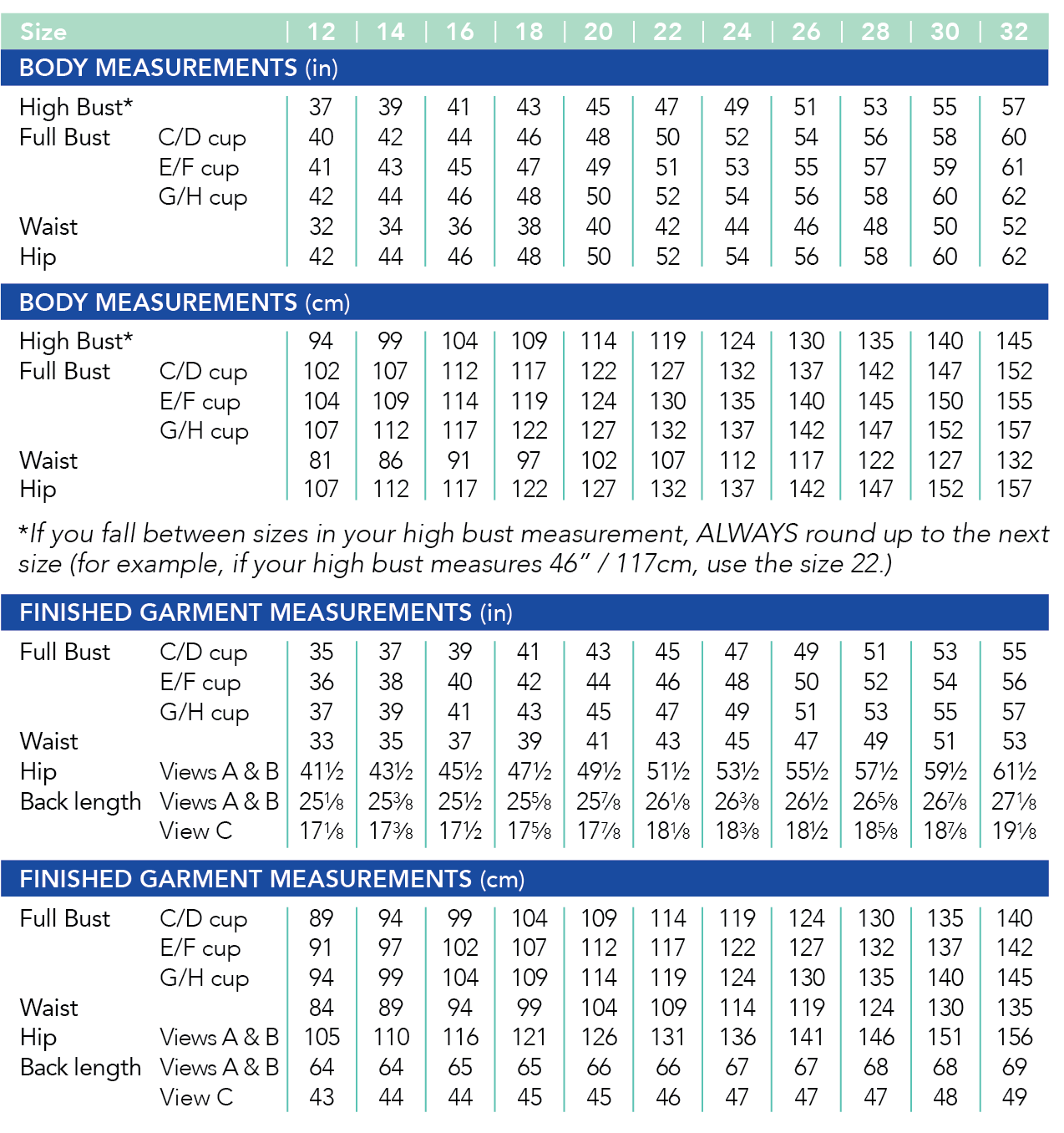
For the Saybrook Tank—as with all Cashmerette patterns—the best bet is to start with your high bust and full bust measurements. You may find that your full bust can fit into multiple size—for example, if your full bust is 48″, you may be an 18 G/H or a 20 C/D—so your high bust will clue you in as to which size and cup size you should use. In this case, if your high bust is 43″, you’d go with the 18 G/H, while if your high bust is 45″, you’d go with the 20 C/D.
Don’t fret if the cup size doesn’t match up with your bra size–there is so much variation in bra sizing that it’s not possible to perfectly line them up. Use your actual full bust measurement and you’ll be fine.
If you compare the finished garment measurements for your size to your body measurements, you’ll notice that the garment is a bit smaller—that’s that negative ease we mentioned earlier! This is by design; if you haven’t sewn many knits before, you may not have noticed that knit garments are usually smaller than your body. This is because they stretch over your body to fit properly, so don’t size up just because you think it won’t fit. If you fabric has enough stretch (at least 25% crosswise is needed for the Saybrook), it will fit just fine.
Grading Between Sizes
If your bust, waist, and hip measurements end up in different sizes, you may want to grade between sizes. For a run-down of how to grade between sizes on pattern like the Saybrook, check out this tutorial here.
Still not sure what size to use? You can write to us here for additional fitting advice, or consider signing up for the Cashmerette Fit Clinic!
Preparing the Pattern and the Fabric
Now that we’ve chosen our size and graded if necessary, it’s time to prepare our pattern and fabric so that we’ll be all ready to sew next time!
Here’s our fabric prep checklist:
- Wash and dry your fabric to make sure it’s pre-shrunk and you’re not going to get any nasty surprises later!
- Press your fabric so it’s nice and flat. Check to see if you get any iron shine when you press the right side. If so, you’ll want to use a press cloth when pressing between steps.
- If this is your first time making a Saybrook, we recommend using an inexpensive fabric that has similar weight and stretch to your final fabric, in case further adjustments are needed. Remember to use a fabric with at least 5% spandex for the neck and armhole bindings so those areas hold their shape.
And here’s what you need to do to prepare your pattern:
- If you’re using the PDF pattern and are printing your PDF pattern at home, you’ll need to print and assemble it. Here are some pointers to help you. If you want to get it printed, here are some suggestions.
- Either cut or trace off your pattern pieces. If you’re using a paper pattern, making adjustments, or are going to make any other sizes in the future, we definitely recommend tracing.
Finally, it’s time to cut into our fabric!
- Cut all pieces, following the layout diagrams in the pattern.
- Transfer all the markings to the fabric. For the notches, make a little snip into the fabric within the seam allowance (so no more than 1/4″ / 6mm).
Made it this far? Give yourself a pat on the back—the hard part is over and now comes the sewing! Check back tomorrow when we get started sewing our Saybrook—you’ll be amazed at how quickly it comes together!
We want to see your creations, whatever stage of the process you’re at! Tag your makes with #SaybrookTank on social media so we (and the whole sewing community) can cheer you on to the finish line!


